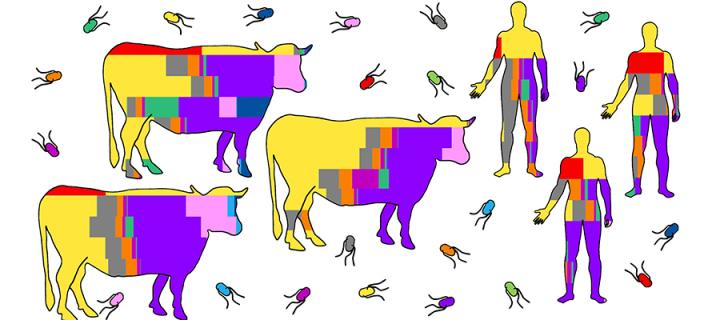Novel sequencing approach to study Salmonella survival in cattle
Researchers have developed a new sequencing method to study the survival of different Salmonella serovars simultaneously in cattle.
Salmonella is a pathogen that infects both cattle and humans. There are over 2600 types or serovars of Salmonella, many of which can survive within the lymphatic system of cattle. Peripheral lymph nodes of cattle contaminated with Salmonella can enter the food chain via ground beef products and improper cooking of these foods can result in infections in humans.

It is important to determine whether some Salmonella serovars are better than others at surviving within cattle to determine if some serovars pose a greater threat to human health than others. This will enable researchers to develop appropriate vaccines and interventions to stop the transmission of Salmonella to humans.
A study conducted by Dr. Prerna Vohra from The Roslin Institute, under the supervision of Prof. Mark Stevens, used a novel whole-genome sequencing approach to investigate mixed-serovar infections of Salmonella in cattle. Some genes of Salmonella vary naturally in their sequence between different serovars. By using the variations in these genes as markers, it is possible to identify and quantify serovars present in a mixed-population.
The team determined the presence and abundance of serovars in various tissues of cattle challenged with a mixed-serovar population. Their results showed that all the Salmonella serovars were present in the peripheral lymph nodes, suggesting that they have similar zoonotic potentials and can all compromise food safety.
This study helped further our understanding of Salmonella infections in cattle, which can involve more than one serovar, and we can conclude that pan-serovar approaches are required to limit the transmission of Salmonella from cattle to humans.
The method has the potential to be applied to other bacteria with naturally variable genes. It could also be used to test the efficacy of vaccines and control strategies against pathogens and for the routine surveillance of farms, food products and the environment.
The method has the potential to reduce the number of animals required to understand the biology of different bacterial strains in animals. It can be used not only to compare virulence but also to test the cross-protective efficacy of vaccines and other control strategies.
The study, funded by the Biotechnology and Biological Sciences Research Council and Zoetis, is published in Applied and Environmental Microbiology.
Contact
Dr Prerna Vohra
Research fellow
Email: Prerna.Vohra@roslin.ed.ac.uk
Related links
Research Division of Infection & Immunity
Bacteriology
Institute Strategic Programme on Control of Infectious Diseases


